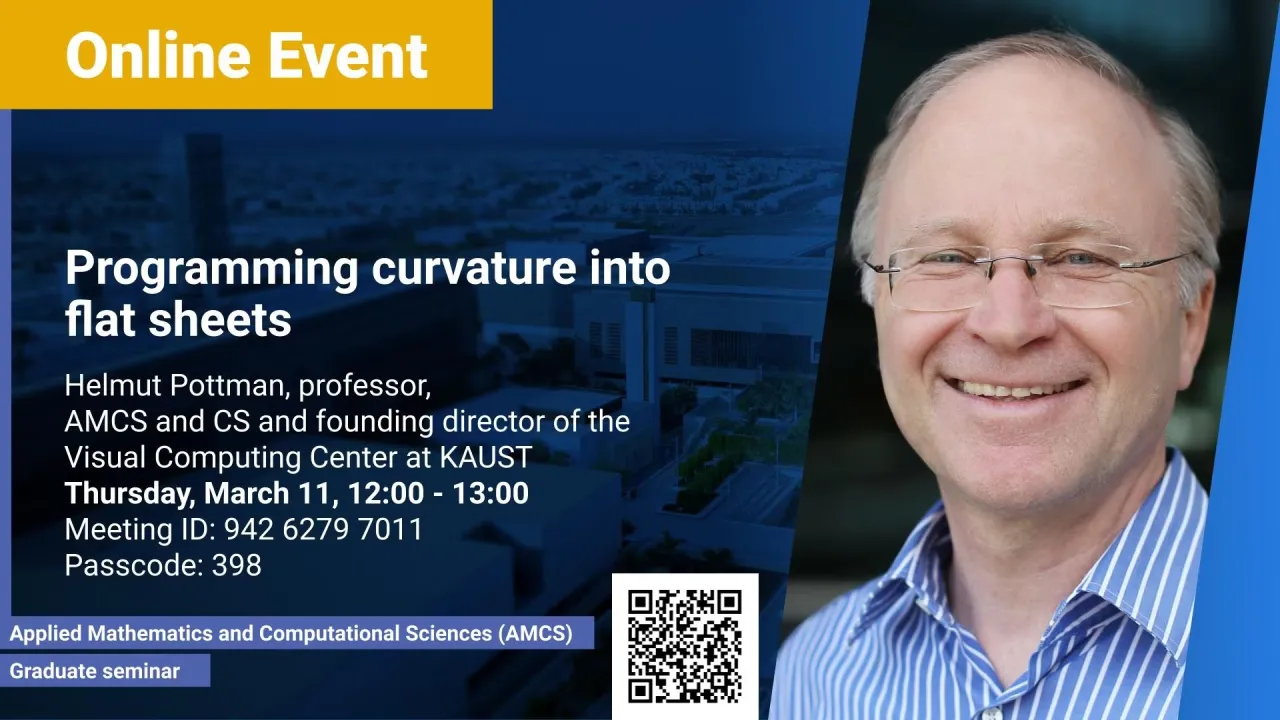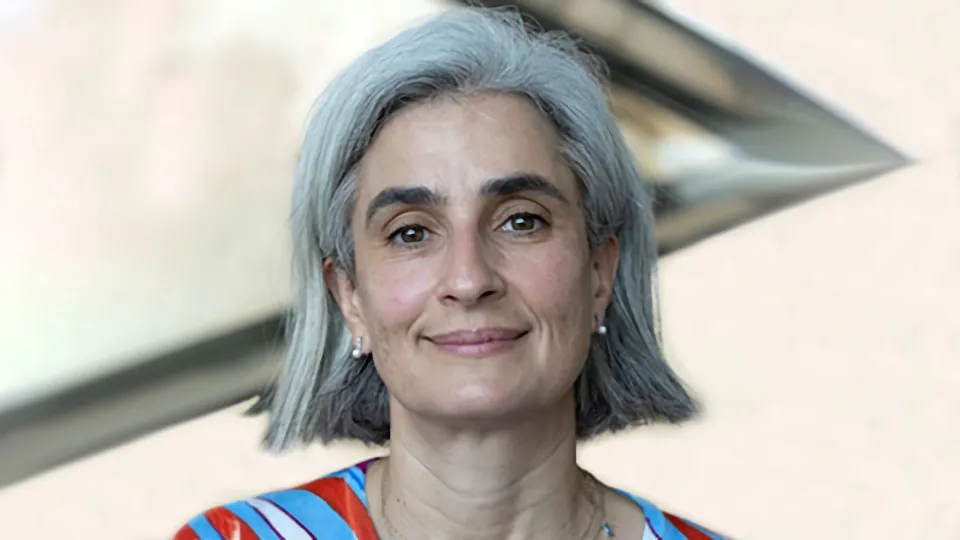
Programming curvature into flat sheets
KAUST
Small-scale cut and fold patterns imposed on sheet material enable its morphing into three-dimensional shapes. This manufacturing paradigm has received much attention in recent years and poses challenges in both fabrication and computation. It is intimately connected with the interpretation of patterned sheets as mechanical metamaterials, typically of negative Poisson ratio. We discuss a fundamental geometric question, namely the targeted programming of a shape morph from a flat sheet to a curved surface, or even between any two shapes. The solution draws on differential geometry, discrete differential geometry, geometry processing and geometric optimization.
Overview
Abstract
Small-scale cut and fold patterns imposed on sheet material enable its morphing into three-dimensional shapes. This manufacturing paradigm has received much attention in recent years and poses challenges in both fabrication and computation. It is intimately connected with the interpretation of patterned sheets as mechanical metamaterials, typically of negative Poisson ratio. We discuss a fundamental geometric question, namely the targeted programming of a shape morph from a flat sheet to a curved surface, or even between any two shapes. The solution draws on differential geometry, discrete differential geometry, geometry processing and geometric optimization.
Brief Biography
Helmut Pottmann is a professor of AMCS and CS at KAUST and founding director of the Visual Computing Center (formerly Geometric Modeling and Scientific Visualization Center). He has had faculty positions in the US and in Germany and has been a Professor of Applied geometry at TU Vienna since 1992. His research interests are in Applied Geometry, Visual Computing and most recently in Geometric Computing for Architecture and Manufacturing. He is a Fellow of SIAM and received a number of awards including the Eurographics Outstanding Technical Contributions Award, the Bezier Award of the Solid Modeling Association and the John Gregory Award for fundamental contributions to geometric modeling.
